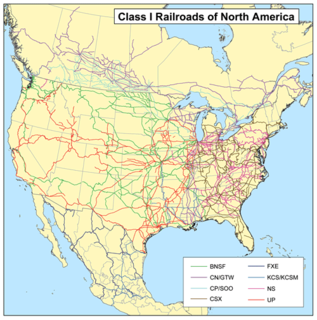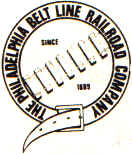Related Research Articles

Cost accounting is defined as "a systematic set of procedures for recording and reporting measurements of the cost of manufacturing goods and performing services in the aggregate and in detail. It includes methods for recognizing, classifying, allocating, aggregating and reporting such costs and comparing them with standard costs." (IMA) Often considered a subset of managerial accounting, its end goal is to advise the management on how to optimize business practices and processes based on cost efficiency and capability. Cost accounting provides the detailed cost information that management needs to control current operations and plan for the future.

Transportation engineering or transport engineering is the application of technology and scientific principles to the planning, functional design, operation and management of facilities for any mode of transportation in order to provide for the safe, efficient, rapid, comfortable, convenient, economical, and environmentally compatible movement of people and goods transport.
Railbanking is preserving railroad rights-of-way for possible future use. Railbanking leaves the rail corridor, railbed, bridges or bridge right-of-way, and other infrastructure intact. This relieves the railroad operating authority from responsibility of maintenance and taxation. Existing rails may or may not be maintained intact on the railbed, depending on their condition or any planned interim use of the railbed. Often the rail corridor is put in custody of a state transportation agency, which then seeks a rail new operator for possible rehab or reactivation. This helps ensure the possibility of future restored rail service when new economic conditions may warrant resuming operation.
Independent agencies of the United States federal government are agencies that exist outside the federal executive departments and the Executive Office of the President. In a narrower sense, the term refers only to those independent agencies that, while considered part of the executive branch, have regulatory or rulemaking authority and are insulated from presidential control, usually because the president's power to dismiss the agency head or a member is limited.

In the United States, railroad carriers are designated as Class I, II, or III, according to annual revenue criteria originally set by the Surface Transportation Board in 1992. With annual adjustments for inflation, the 2019 thresholds were US$504,803,294 for Class I carriers and US$40,384,263 for Class II carriers.
Cost–benefit analysis (CBA), sometimes also called benefit–cost analysis, is a systematic approach to estimating the strengths and weaknesses of alternatives. It is used to determine options which provide the best approach to achieving benefits while preserving savings in, for example, transactions, activities, and functional business requirements. A CBA may be used to compare completed or potential courses of action, and to estimate or evaluate the value against the cost of a decision, project, or policy. It is commonly used to evaluate business or policy decisions, commercial transactions, and project investments. For example, the U.S. Securities and Exchange Commission must conduct cost-benefit analyses before instituting regulations or deregulations.

The Georgia Department of Transportation (GDOT) is the organization in charge of developing and maintaining all state and federal roadways in the U.S. state of Georgia. In addition to highways, the department also has a limited role in developing public transportation and general aviation programs. GDOT is headquartered in downtown Atlanta and is part of the executive branch of state government.

The Surface Transportation Board (STB) of the United States is a federal, bipartisan, independent adjudicatory board. The STB was established on January 1, 1996, to assume some of the regulatory functions that had been administered by the Interstate Commerce Commission when the ICC was abolished. Other ICC regulatory functions were either eliminated or transferred to the Federal Motor Carrier Safety Administration or Bureau of Transportation Statistics within DOT.

CSX Corporation is an American holding company focused on rail transportation and real estate in North America, among other industries. The company was established in 1980 as part of the Chessie System and Seaboard Coast Line Industries merger. The various railroads of the former Chessie System and Seaboard Coast Line Industries that are now owned by CSX Corporation were eventually merged into a single line in 1986 and it became known as CSX Transportation. CSX Corporation currently has a number of subsidiaries beyond CSX Transportation. Based in Richmond, Virginia, USA after the merger, in 2003 the CSX Corporation headquarters moved to Jacksonville, Florida. CSX is a Fortune 500 company.

RailAmerica, Inc., based in Jacksonville, Florida, is a holding company of a number of short-line railroads and regional railroads in the United States and Canada.

The Dakota, Minnesota and Eastern Railroad was a Class II railroad and a subsidiary of the Canadian Pacific Railway (CP), operating across South Dakota and southern Minnesota in the Northern Plains of the United States. Portions of the railroad also extended into Wyoming, Nebraska, Iowa, and Illinois.

The Tennessee Department of Transportation (TDOT) is a multimodal agency with statewide responsibilities in roadways, aviation, public transit, waterways, and railroads. The mission of TDOT is to provide a safe and reliable transportation system for people, goods, and services that supports economic prosperity in Tennessee.

Pan Am Railways, Inc. (PAR) is a subsidiary of CSX Corporation that operates Class II regional railroads covering northern New England from Mattawamkeag, Maine, to Rotterdam Junction, New York. Pan Am Railways is primarily made up of former Class II regional railroads such as Boston and Maine Corporation, Maine Central Railroad Company, Portland Terminal Company, and Springfield Terminal Railway Company. It was formerly known as Guilford Transportation Industries and was also known as Guilford Rail System. Guilford bought the name, colors, and logo of Pan American World Airways in 1998.

The Federal Railroad Administration (FRA) is an agency in the United States Department of Transportation (DOT). The agency was created by the Department of Transportation Act of 1966. The purpose of the FRA is to promulgate and enforce rail safety regulations, administer railroad assistance programs, conduct research and development in support of improved railroad safety and national rail transportation policy, provide for the rehabilitation of Northeast Corridor rail passenger service, and consolidate government support of rail transportation activities.
The Research and Innovative Technology Administration (RITA) is a unit of the United States Department of Transportation (USDOT). It was created in 2005 to advance transportation science, technology, and analysis, as well as improve the coordination of transportation research within the department and throughout the transportation community.
The Department Of the Navy Acquisition Intern Program is a civilian professional hiring program. The Naval Acquisition Career Center manages several hundred interns at any given time.

The Philadelphia Belt Line Railroad owns a 2.66-mile (4.28 km) long railroad line running along the Delaware River waterfront in Philadelphia, Pennsylvania. It was created in 1889 to allow any Philadelphia railroad to access the waterfront. The railroad, which does not operate any trains itself, is currently maintained by Conrail Shared Assets Operations and used by CSX Transportation and Norfolk Southern Railway.
The Uinta Basin Rail project is a proposed 100-mile (160 km) rail line to connect the shale oil rich Uinta Basin region of eastern Utah to the national rail network. Numerous proposals have been made, some as far back as 1902, that are still under consideration. The current effort is a public-private partnership between a coalition of 7 counties in Utah, the Rio Grande Pacific Corporation and Drexel Hamilton Infrastructure Partners. The railroad is also backed by the Ute Tribe who hold a 5% stake in the project. If the rail line is built it will be the first major greenfield rail line built in the United States since the line to the Powder River Basin was built in the 1970s. The Surface Transportation Board approved construction of the line in December 2021.
The Passenger Rail Investment and Improvement Act of 2008 is a law that reauthorized Amtrak and authorized the United States Department of Transportation to provide grants for operating costs and capital expenses and to repay Amtrak's long-term debt and capital leases. It required Amtrak to adopt cost and performance metrics with regard to its intercity trains and established the Northeast Corridor Commission to govern Amtrak’s shared services along the Northeast Corridor.
References
- ↑ Surface Transportation Board, About STB > Office: OEEAA, Retrieved November 20, 2009